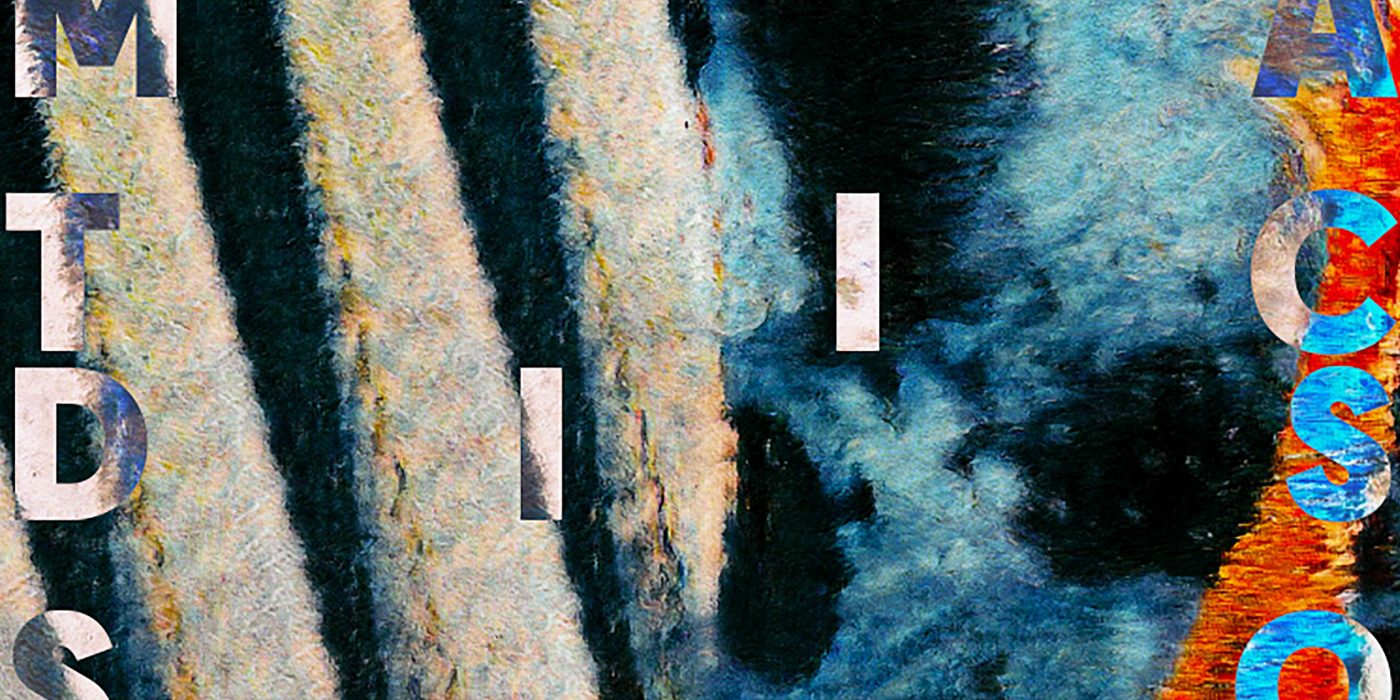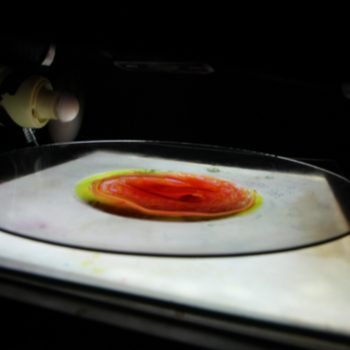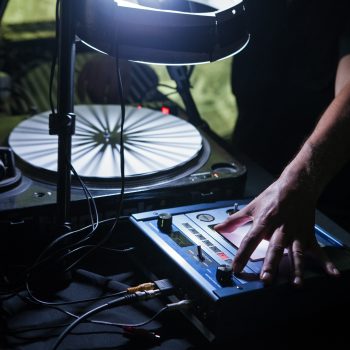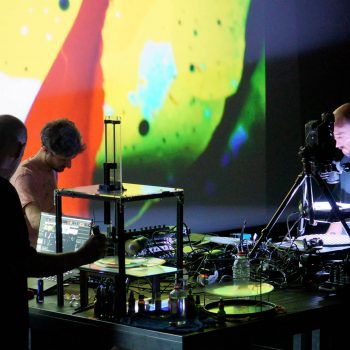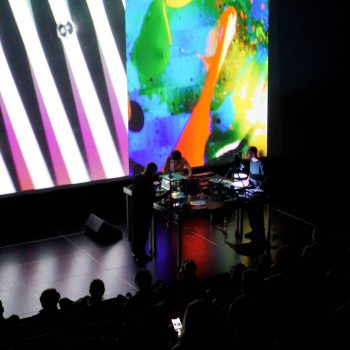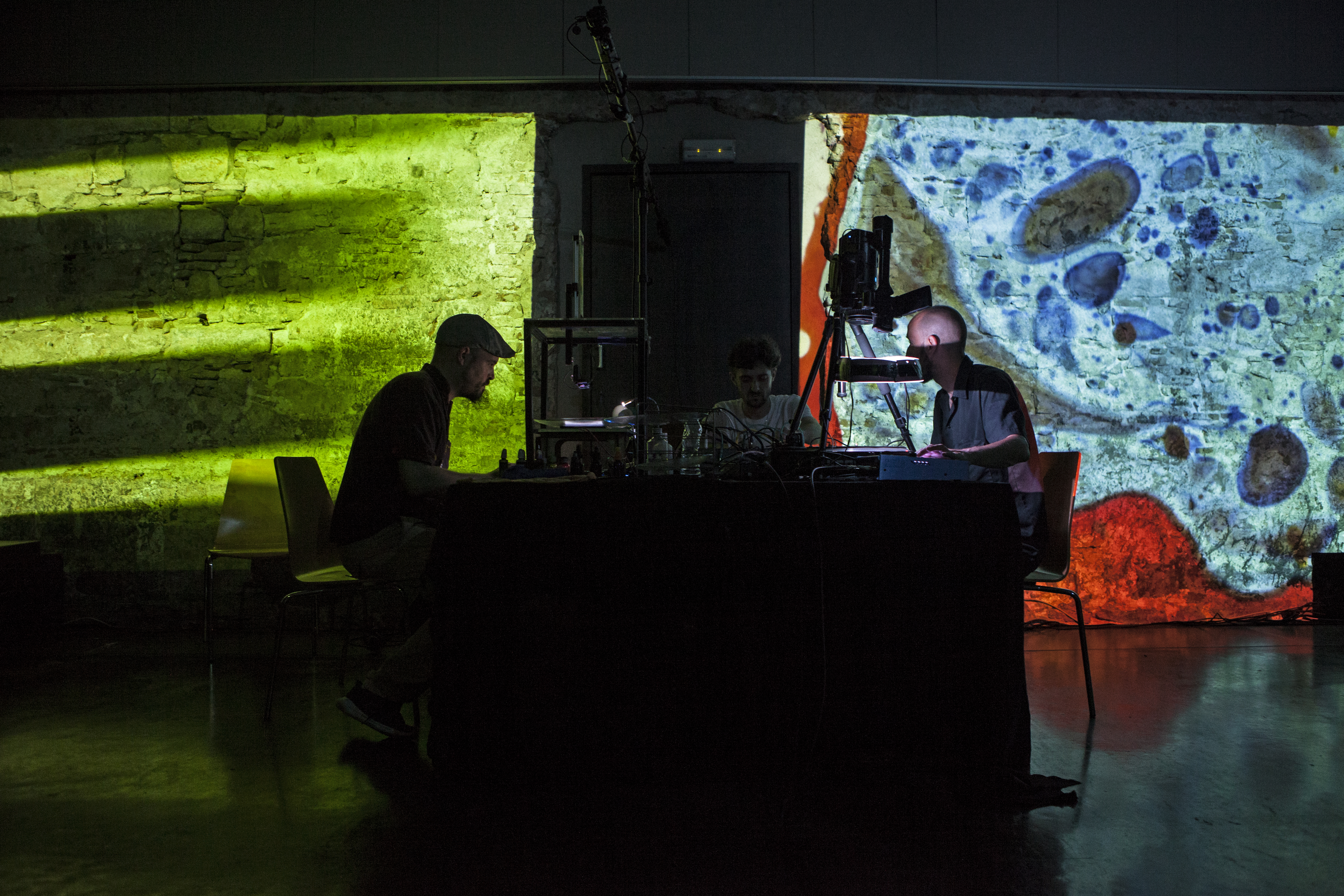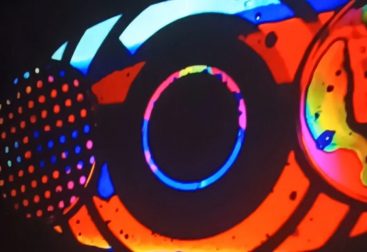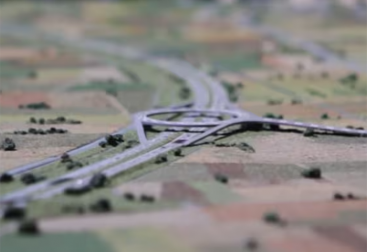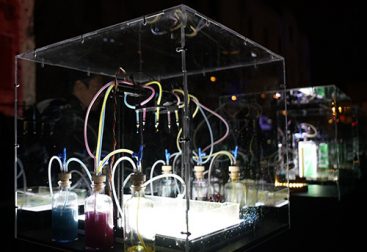CHROMATIC DISSONANCE
The project arises from the concern of Diego Iñiguez and Diego Suárez to make or generate music from their own visual imaginarium, that is, to change the classic perception of audiovisual shows in which videos can be audio-reactive, andreverse it, creating video-reactive musical compositions.
Some of the questions that arose were: What does a color sound like? Does a certain movement generate sound?
The first approach to the technology used and the first version of the audiovisual performance was carried out in the artistic residency held at Media Estruch in Sabadell, from September to November 2019, which delved into the sounds created by the shapes and colors, and It had a noisy character.
RGBdB
From there arose the idea of creating an audiovisual performance where the music is generated only from the visuals, and collaborations began to be opened with musicians that would give the show a more musical character, but without giving up the base idea and its experimental origin.
So far we have collaborated with Diego Laffite, and Ana Fauna:
Diego Lafitte joins the project to add the musical experience of his work as an orchestra director, using the sounds generated live by Diego and Diego, transforming them into atmospheres of complex intensity loaded with echoes, syncopations, overflows, euphoric breaks and corpulent basses.
Ana Paula Santana (Ana Fauna) comes to the project to add her musical experience, using the sounds generated live by Diego and Diego, using error, repetition, disruption and accumulation as tools to create musical environments.
RGBdB approaches audio and synesthesia from two seemingly opposite technological perspectives, as one makes use of programming code and new digital technologies to translate shapes, sizes and colors into sound, while another uses obsolete or almost obsolete technologies to generate audio.
In this case, technologies, both innovative and obsolete, are the vehicle that will allow the transformation of visual compositions into sound ones; They are, therefore, one of the cornerstones on which the project is built, since they are direct interpreters of the transformation of images into music.
Diego Suárez creates analog visuals with inks and chemical reactions, which he analyzes in real time with computer vision tools programmed by himself, and these translate the colors, shapes and movements obtained into sound.
Diego Iñiguez creates the audio using an analog video camera – pointed at a turntable modified with custom vinyl – whose video output cable will connect to a mixing console and effects pedals.
In summary, Chromatic Dissonance’s RGBdB project is a fascinating exploration of synesthesia and the transformation of the visuals into sound, which, thanks to the collaboration of musicians and the combination of innovative and obsolete technologies, challenges the classic perception of shows in alive and invites us to imagine new forms of interaction between visual art and music.
